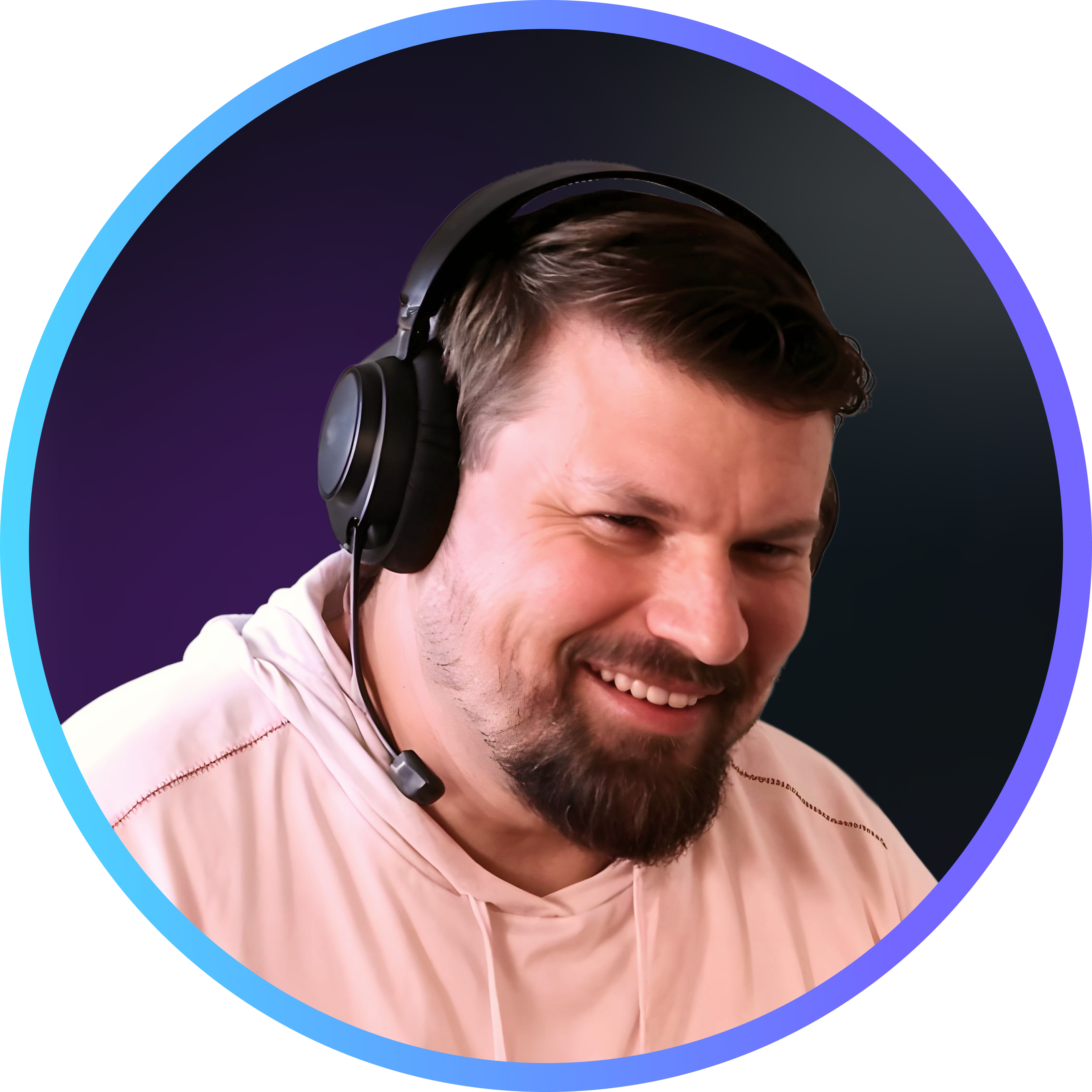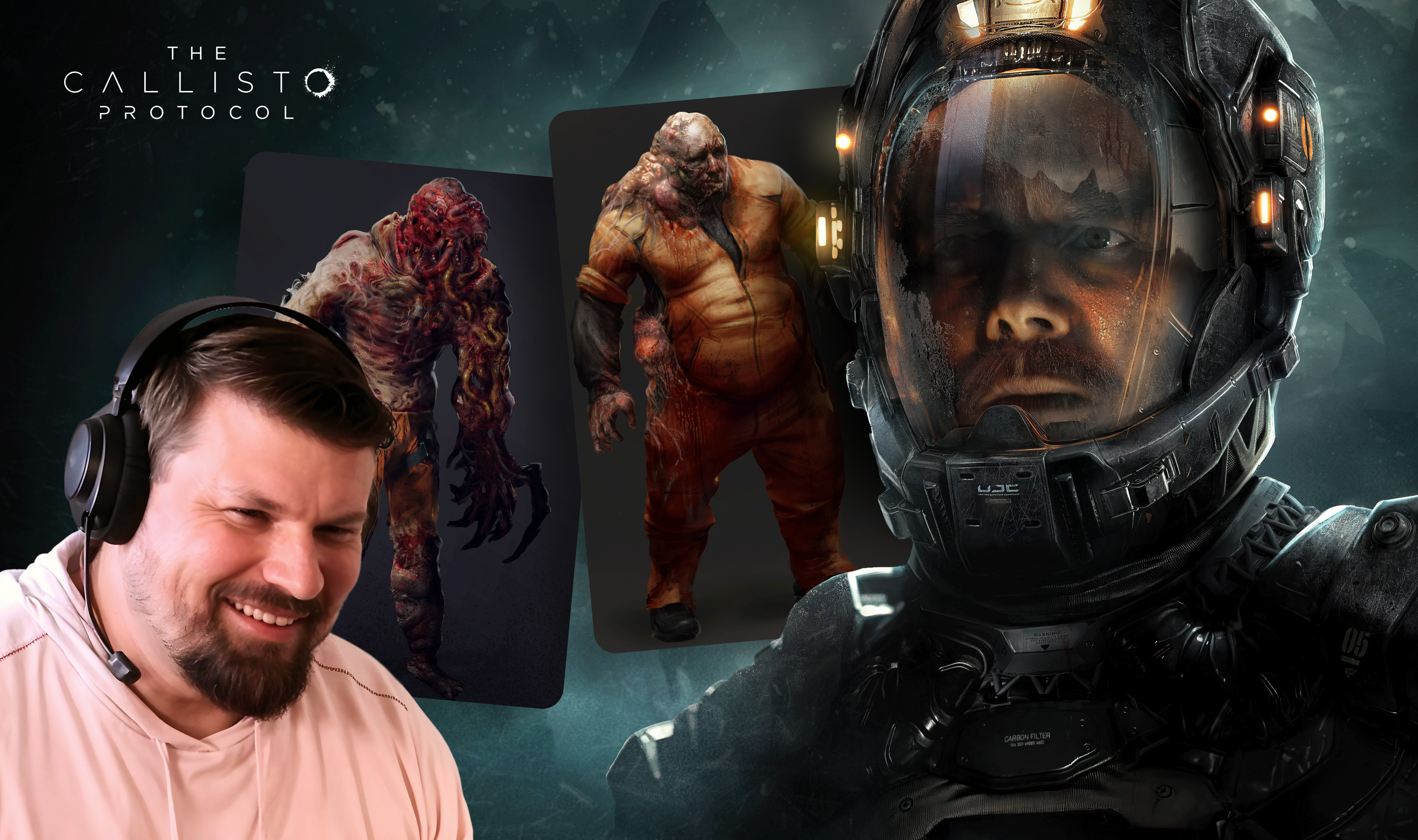Behind every horror game is a concept artist who brings those nightmares to life. But designing for horror games is more than just creating scary and eerie arts. It’s about building tension, playing with light and shadow, and creating a world that feels real and unforgettable. Because the goal isn’t just to scare the player, but it’s how we can make them feel like they are part of the horror.
In the latest episode of Get Hired, Jesse Lee, the Concept Art Director at Striking Distance Studios, shares his best tips on how to break into the gaming industry as a sci-fi horror concept artist. And if you’re passionate about concept art, especially in the sci-fi horror genre, we have summarized important points on what it takes to land a job in this field.
Meet Jesse Lee!

Jesse Lee, a Concept Art Director at Striking Distance Studios, known for his work on sci-fi horror games. He started his career while still in college at San Jose State University, where he made connections that helped him land his first jobs. Jesse worked on projects like Lair, Factor 5, and Dead Space at EA. He got these opportunities by sharing his portfolio with friends, who passed it to art directors. His early work included pencil and architectural sketches, and from there, he built a successful career in concept art.
What It Takes to Become a Successful Horror Concept Artist
To do well as a horror concept artist, you need to learn the basics of art, use your imagination, and really love the horror style. It’s a mix of strong skills and enjoying what you do that will help you stand out and succeed. What are the key steps to help you get there?

Start With a Strong Foundation
Jesse talks about the importance of a solid art foundation. He believes that every concept artist, no matter the genre, should have a deep understanding of the basics like anatomy, perspective, and color theory. As Jesse puts it, “I really look for that classical art foundation, really knowing just the principles of art… If I’m looking for a character person, you could tell they’ve studied and they’ve practiced anatomy, especially like the environment, people knowing perspective, knowing color through.”

Whether you want to design characters or environments, having these skills will help you stand out. For character designers, it’s essential to have a strong grip on anatomy. For environment artists, mastering perspective is key to building believable worlds. These foundations make all the difference in your work, especially when working on something complex like a sci-fi horror game.
Your Passion Matters: Show It in Your Work
Jesse values artists who genuinely love what they do. This love for the craft shows through in their portfolios. He calls it “mileage,” meaning how much effort and work an artist has put into their craft.
“You could see a lot of work, a lot of, I call it mileage, you know, just people that have done a lot of work because they love doing it.”
Jesse can easily tell when an artist has worked hard and when they’re passionate about their projects. It’s not just about completing assignments but about continuously creating and improving. He encourages aspiring artists to work on personal projects outside of their professional jobs. Even if you can’t show professional work due to non-disclosure agreements, personal work can fill in those gaps in your portfolio and show your dedication.
Participating in online art challenges or creating personal projects are great ways to build that mileage. It demonstrates to hiring managers that you’re not just doing this for a paycheck—you love what you do, and you’re always working to improve.
Be Creative and Original
Concept art can be a competitive field, especially in sci-fi horror, creativity is your best tool to stand out. Jesse values artists who aren’t afraid to think outside the box. While it’s important to showcase technical skills, creativity is what truly makes a portfolio shine.
“There are so many really good artists. And then you see something that’s like, I haven’t seen that before, and that’s where it stands out.”
Jesse looks for originality. After all, being different is what will make an art director stop and take notice.
That being said, it’s also important to show a balance. Even if horror is your favorite genre, Jesse suggests adding a mix of styles to your portfolio. “Work on different types of things, show different abilities… that’s a good thing for an art director to see in a portfolio,” he continues.
Network and Make Connections
Believe it or not, Jesse’s first job didn’t come from just applying online—it came through connections. Networking is an essential part of getting hired in the gaming industry. Jesse built relationships during his time at San Jose State, which led to his first concept art gigs at Factor 5 and later Dead Space.
“How did I get it out there? You know, I just gave my portfolio to friends, they gave it to their art directors.”
Building relationships with other artists and professionals in the field can help you get your foot in the door. Platforms like Fusion by Devoted (formerly Fusion) are great for showcasing your work, but don’t forget the power of personal connections. Attend industry events, join online communities, and share your work with others.

What Should Be in Your Portfolio?
Jesse shares clear advice on what makes a great portfolio, especially when applying for jobs in sci-fi horror. Here’s what he looks for:
| Diverse Work | Show that you can design more than just one type of character or environment. Jesse likes to see versatility. He suggests including a mix of work, from everyday objects to complex creatures. |
| Personal Projects | If you don’t have a lot of professional work, don’t let that hold you back. Fill your portfolio with personal projects that reflect your style and creativity.
As Jesse says, “If you can’t show a lot of your professional work, do personal work, you know, and get work up there.” |
| Technical Skill | You need to show that you can execute your ideas well. Whether it’s in creature design, mechanical objects, or environments, your ability to bring your ideas to life through technical skill is crucial. |
| Creativity and Originality | While technical skills are important, creativity is what will make your portfolio stand out. Show something new and different—something that an art director hasn’t seen before. |
“There are artists out there that are just… their portfolio is filled up with horror and that’s totally valid. I just think if you’re trying to get a job… work on different types of things, show different abilities.”
While Jesse works in the sci-fi horror genre, he cautions against only focusing on horror when building your portfolio. He admits that horror can be a bit of a niche, and limiting yourself to just one genre might narrow your opportunities.

It’s great to have a passion for horror, but adding variety will show art directors that you’re capable of more. Include work that demonstrates your ability to handle different themes and styles. This makes you a more versatile artist and opens the door to more job opportunities.
Final Words: Don’t Be Afraid to Make Mistakes
One of the most important lessons Jesse shares is the idea that it’s okay to make mistakes. When you’re starting out, it’s easy to feel the pressure to be perfect. But Jesse believes that artists should embrace the learning process and not be afraid to experiment and try new things.
“When I was starting out, I wanted to be perfect… I think sometimes just enjoying the moment is just as valuable.”
So remember, don’t let the fear of mistakes hold you back. Each project you work on helps you grow and learn. By allowing yourself to make mistakes, you’re giving yourself the freedom to explore your creativity and improve your skills to become a horror concept artist.
Related:
From Portfolio to Paycheck: Find Work as a Concept Artist | Get Hired Ep. 9 with Jesse Lee
